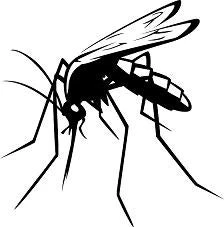
It is undeniable that rapid control of malaria is vital to free malaria-prone countries from the scourge of this debilitating disease The primary tools used for malaria prevention are long-lasting insecticidal nets, and indoor residual spraying (IRS) in which insecticides are sprayed on indoor walls of homes.
The Roll Back Malaria Partnership, a global framework for coordinated action against malaria was launched in 1998 to target the Millennium Development Goal of achieving near zero malaria deaths by 2015. Then, in 2006, to accelerate the reduction in malaria incidence, the World Health Organization (WHO) recommended greater emphasis on the use of IRS. One of the insecticides of choice for IRS is DDT (dichloro-diphenyl-trichloro-ethane) because of its high insecticidal activity, low acute mammalian toxicity, wide spectrum use, low price, and long duration of activity. Yet the use of DDT raises concerns of potential harm to the environment and human health, mainly because of the persistent and bio-accumulative nature of DDT and its potential to magnify through the food chain.
In a recent paper, Brian Blankespoor, Abdelaziz Langaoui, Subhendu Roy, and I investigate the potential adverse effects of DDT on human health in countries that use or are expected to re-introduce DDT in their disease vector control programs.
According to various studies, adverse inadvertent health effects of DDT include: a poisoning hazard to children from accidental ingestion, temporary damage to nervous system, possible carcinogenic effects (such as liver cancer, pancreatic cancer, testicular cancer, breast cancer, leukemia and lymphoma), development effects, negative effects on the hormonal system and male and female reproductive effects.
With both a global and regional perspective, we conducted our analysis in three steps: first, we used the Global Malaria Atlas compiled by the Oxford University and overlaid it with global population data from the LandScan to calculate the count of people likely to be exposed to DDT; second, we used the estimates of elevated risk of some diseases (risk ratios) from the available literature to estimate the increased incidence of the inadvertent diseases due to DDT exposure; and lastly, we used estimates of direct treatment costs and indirect costs from illnesses and deaths as captured by Disability Adjusted Life Years (DALY) to quantify health costs of DDT from all inadvertent diseases and compared that with the benefits from eradication of malaria.
Globally, our estimates are that at present 1.25 billion people live where malaria is prevalent, and that in 2010 annual economic losses from malaria exceeded US $69 billion. While the use of DDT can lead to a significant reduction in the estimated economic loss caused by malaria, our study shows that it can also add more than US $28 billion a year in costs from the resulting inadvertent health effects. However, this economic loss can be reduced to US $5 billion if the use of DDT is restricted to only areas with the highest malaria endemicity (where Plasmodium falciparum parasite rate in blood samples is greater than 40 percent), which still targets more than 70 percent of population currently exposed to malaria.
It should be noted that malaria is not uniformly distributed across regions and countries, with Sub-Saharan Africa suffering the highest level of the global economic loss (78 percent). In some Sub-Saharan countries (for example, Liberia, Malawi, Mozambique, São Tomé and Principe, Tanzania, Uganda, Zambia) the losses due to malaria may even exceed 10 percent of GDP. Our analysis suggests that these countries with high malaria incidence rates are likely to see relatively larger net benefits from the proper and responsible use of DDT in malaria control.
Other considerable adverse effects of the use of DDT on malaria control, noted in a separate exercise not reported in this paper, are observed with trade and the environment. Significant contamination of soil and loss of biodiversity may result from DDT use due to its persistent nature. Cases of mosquito resistance to DDT have been reported in some geographical locations. Continued use or reintroduction of DDT in malaria control should call for a careful country-by-country assessment of costs and benefits based on a country’s circumstances. Other vector control measures, such as larvicidal and environmental management may also be -necessary - when appropriate - based on scientific evidence.


Join the Conversation